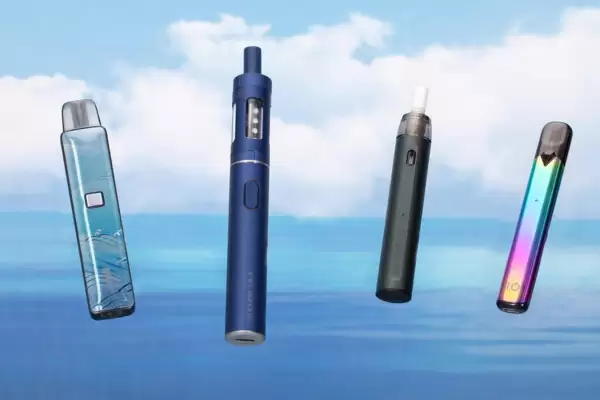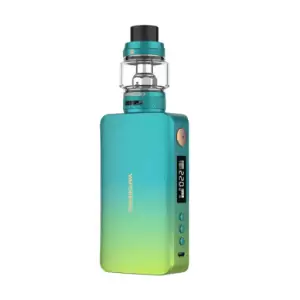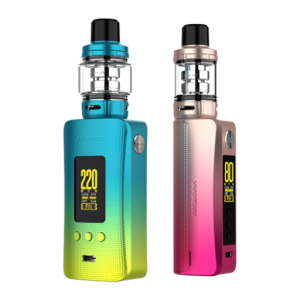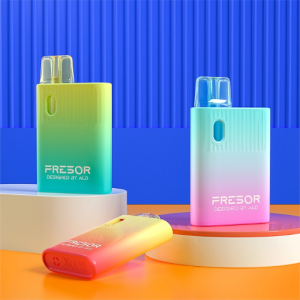Vaping has emerged as a popular alternative to traditional smoking, gaining traction among individuals seeking to break free from nicotine addiction. As awareness of the harmful effects of smoking grows, many turn to vaping as a potential solution to quit smoking. This section explores the concept of vaping as a smoking cessation tool and its increasing prevalence in the quest for a smoke-free lifestyle.
The vape market offers a plethora of devices designed to cater to diverse preferences and needs. From compact cig-a-likes to advanced mod systems, there is a wide array of options available to suit every vaper’s preference. Understanding the various types of vape devices is crucial in determining the most suitable option for those looking to transition away from smoking.
Traditional smoking cessation methods, such as nicotine replacement therapy (NRT) and prescription medications, have long been utilized to help individuals quit smoking. However, vaping presents a novel approach that offers smokers an alternative method to manage nicotine cravings and withdrawal symptoms. This section examines how vaping compares to conventional smoking cessation methods in terms of efficacy, safety, and user experience.
Research indicates that vaping is significantly less harmful than smoking conventional cigarettes. Unlike combustible tobacco products, which produce harmful tar and carbon monoxide through combustion, vaping involves the inhalation of vaporized e-liquid, which typically contains fewer toxicants. Furthermore, vaping eliminates exposure to carcinogenic by-products of combustion, potentially reducing the risk of smoking-related diseases. This section delves into the scientific evidence supporting the use of vaping as a harm reduction strategy and its potential impact on public health.

Understanding the Role of Vape Devices in Smoking Cessation
Examination of how vape devices can address nicotine cravings and oral fixation
Vape devices play a crucial role in smoking cessation by providing smokers with a safer alternative to satisfy their nicotine cravings and oral fixation. Unlike traditional cigarettes, which rely on combustion to deliver nicotine, vape devices heat e-liquid to produce vapor that is inhaled by the user. This process allows smokers to experience the sensation of smoking without the harmful effects of tobacco smoke. Moreover, vape devices offer customizable nicotine levels, allowing users to gradually reduce their nicotine intake over time, ultimately aiding in the quitting process.
Explanation of the various components of vape devices, including batteries, tanks, and coils
Vape devices consist of several components that work together to deliver nicotine and flavor to the user. These components include batteries, which power the device, tanks or pods, which hold the e-liquid, and coils, which heat the e-liquid to produce vapor. Additionally, vape devices may feature adjustable airflow systems, temperature control settings, and other customizable options to enhance the user experience. Understanding the functionality of these components is essential for vapers to maximize the effectiveness of their devices and achieve their smoking cessation goals.
Insight into how vape devices deliver nicotine and simulate the sensation of smoking
Vape devices utilize e-liquids containing nicotine, propylene glycol, vegetable glycerin, and flavorings to deliver nicotine to the user. When the user inhales from the device, the e-liquid is heated by the coil, producing vapor that is then inhaled into the lungs. This process mimics the sensation of smoking, providing users with a familiar experience while reducing their exposure to harmful chemicals found in tobacco smoke. Additionally, the variety of flavors available in e-liquids enhances the vaping experience, making it more enjoyable for users seeking to quit smoking.
Types of Vapes and Their Suitability for Quitting Smoking
Overview of different types of vape devices, such as cig-a-likes, vape pens, pod systems, and mods
Vape devices come in various shapes, sizes, and designs, each offering unique features and functionalities. Cig-a-likes, resembling traditional cigarettes in appearance, are compact and easy to use, making them ideal for beginners. Vape pens, slightly larger than cig-a-likes, offer more battery life and e-liquid capacity, providing a balance between portability and performance. Pod systems, characterized by their refillable or pre-filled pods, are user-friendly and convenient, catering to vapers seeking simplicity and ease of use. Mods, or modified vaping devices, are larger and more customizable, allowing advanced users to personalize their vaping experience according to their preferences.
Analysis of the advantages and disadvantages of each type for smoking cessation purposes
Cig-a-likes are discreet and closely mimic the sensation of smoking, making them suitable for smokers transitioning to vaping. However, their limited battery life and e-liquid capacity may be restrictive for heavy users. Vape pens offer longer battery life and more customizable options, but their larger size may be less appealing to some users. Pod systems are convenient and user-friendly, with refillable or pre-filled pods for easy maintenance. However, their restricted airflow and coil options may limit the vaping experience for advanced users. Mods provide the highest level of customization and performance but may be overwhelming for beginners due to their complexity.
Discussion on which vape devices may be most effective for different types of smokers
The most effective vape device for quitting smoking depends on individual preferences, smoking habits, and vaping experience. Cig-a-likes are suitable for light to moderate smokers looking for a discreet and straightforward vaping experience. Vape pens are ideal for moderate to heavy smokers seeking longer battery life and more customizable options. Pod systems are suitable for beginners and smokers transitioning to vaping, offering convenience and ease of use. Mods are best suited for experienced vapers looking for advanced features and customization options to tailor their vaping experience to their liking.
Factors to Consider When Choosing the Best Vape for Quitting Smoking
Examination of key factors to consider when selecting a vape device, including nicotine strength, e-liquid flavor, and device features
When choosing the best vape for quitting smoking, several factors should be taken into account to ensure an effective and enjoyable vaping experience.
Nicotine Strength: The nicotine strength of the e-liquid plays a crucial role in managing nicotine cravings and facilitating smoking cessation. Smokers transitioning to vaping typically start with higher nicotine concentrations and gradually reduce the strength over time. It is essential to choose an e-liquid with an appropriate nicotine level that matches the user’s smoking habits and preferences.
E-liquid Flavor: The wide variety of e-liquid flavors available allows vapers to customize their vaping experience according to their taste preferences. From traditional tobacco and menthol flavors to fruity, dessert, and beverage-inspired options, there is a flavor to suit every palate. Selecting an e-liquid flavor that appeals to the user can enhance the vaping experience and increase satisfaction, making it easier to quit smoking.
Device Features: Different vape devices offer various features and functionalities designed to enhance the vaping experience. Considerations such as battery life, power output, airflow control, and coil compatibility should be taken into account when selecting a vape device. Beginners may prefer simple and user-friendly devices, while experienced vapers may opt for advanced mods with customizable settings.
Explanation of how to determine the appropriate nicotine strength based on smoking habits
Determining the appropriate nicotine strength for the e-liquid involves assessing the user’s smoking habits, such as the number of cigarettes smoked per day and the frequency of smoking. Heavy smokers may start with higher nicotine concentrations (e.g., 18-24 mg/ml) to satisfy their nicotine cravings effectively. Moderate to light smokers may opt for lower nicotine strengths (e.g., 6-12 mg/ml) to gradually reduce their nicotine intake over time. It is essential to experiment with different nicotine strengths and adjust accordingly to find the optimal level for successful smoking cessation.
Consideration of factors such as battery life, portability, and ease of use in choosing the best vape device
Battery life, portability, and ease of use are essential considerations when selecting a vape device. Devices with longer battery life are preferable for heavy vapers who require extended usage between charges. Portability is crucial for users who are constantly on the go and require a compact and lightweight device that can be easily carried in a pocket or bag. Additionally, user-friendly features such as simple operation, ergonomic design, and intuitive controls contribute to a positive vaping experience, especially for beginners.
Real-Life Experiences: Success Stories of Quitting Smoking with Vaping
Presentation of real-life testimonials from individuals who have successfully quit smoking using vape devices
Real-life success stories provide valuable insights into the effectiveness of vaping as a smoking cessation tool and offer inspiration to others who are considering making the switch. Here are some testimonials from individuals who have successfully quit smoking with the help of vape devices:
- John: “I had been smoking for over 20 years and tried numerous methods to quit without success. When I discovered vaping, it was a game-changer. I started with a simple vape pen and gradually reduced my nicotine intake over time. Vaping not only helped me quit smoking but also improved my overall health and quality of life.”
- Sarah: “As a pack-a-day smoker, quitting seemed like an impossible task until I discovered vaping. I started with a pod system and found it incredibly easy to use. The variety of flavors made vaping enjoyable, and I no longer craved traditional cigarettes. Vaping has changed my life for the better, and I couldn’t be happier.”
- Michael: “I struggled with smoking for years and tried everything from patches to gum with little success. Vaping was the only thing that worked for me. I started with a cig-a-like and gradually transitioned to a mod with lower nicotine levels. Vaping not only helped me quit smoking but also allowed me to reclaim control over my life.”
Analysis of the factors that contributed to their success, including device choice, nicotine management, and support systems
Several factors contributed to the success of individuals who quit smoking with vaping. The choice of vape device played a crucial role, with many opting for user-friendly devices such as pod systems or vape pens that closely mimicked the sensation of smoking. Effective nicotine management, achieved through gradual reduction of nicotine levels in e-liquids, helped users gradually wean themselves off nicotine addiction. Additionally, the support of friends, family, and online vaping communities provided encouragement and motivation throughout the quitting process.
Exploration of common challenges faced during the transition from smoking to vaping and how they were overcome
While many individuals successfully quit smoking with vaping, the transition was not without challenges. Common hurdles included initial resistance to change, adjusting to the different sensation of vaping, and overcoming cravings for traditional cigarettes. However, with determination, perseverance, and support, users were able to overcome these challenges and ultimately achieve their goal of quitting smoking. Strategies such as distraction techniques, gradual reduction of nicotine levels, and seeking support from peers played a crucial role in overcoming obstacles along the way.

Expert Insights and Recommendations for Quitting Smoking with Vaping
Presentation of expert opinions and recommendations from healthcare professionals and smoking cessation specialists
Healthcare professionals and smoking cessation specialists play a crucial role in supporting individuals who wish to quit smoking with vaping. Here are some expert insights and recommendations for quitting smoking with vaping:
- Dr. Smith, Pulmonologist: “Vaping has emerged as a promising tool for smoking cessation, offering smokers a safer alternative to traditional cigarettes. As a pulmonologist, I have seen firsthand the positive impact of vaping on my patients’ health. I recommend smokers who are struggling to quit to consider vaping as a viable option and to consult with their healthcare provider for personalized advice and support.”
- Jane Doe, Smoking Cessation Counselor: “Quitting smoking is challenging, but vaping can make the transition easier for many individuals. As a smoking cessation counselor, I work closely with my clients to develop personalized vaping plans tailored to their needs and preferences. I encourage smokers to explore different vape devices, experiment with nicotine strengths, and seek support from peers and professionals to increase their chances of success.”
Discussion on best practices for using vape devices as a smoking cessation aid
Using vape devices as a smoking cessation aid requires careful consideration and adherence to best practices. Here are some tips for maximizing the effectiveness of vaping for quitting smoking:
- Set realistic goals: Establish achievable goals for quitting smoking and transitioning to vaping gradually. Gradually reduce nicotine levels in e-liquids over time to minimize withdrawal symptoms and nicotine dependence.
- Seek professional guidance: Consult with healthcare professionals or smoking cessation specialists for personalized advice and support. They can provide guidance on choosing the right vape device, selecting appropriate nicotine strengths, and developing a quitting plan tailored to individual needs.
- Stay motivated: Quitting smoking is a journey that requires dedication and perseverance. Stay motivated by reminding yourself of the health benefits of quitting smoking and the positive changes you’re making in your life.
Consideration of safety concerns and potential risks associated with vaping for smoking cessation purposes
While vaping is generally considered safer than smoking traditional cigarettes, it is not without risks. Health authorities have raised concerns about the long-term health effects of vaping, particularly among youth and non-smokers. It is essential to use vape devices responsibly and avoid underage use. Additionally, users should be aware of potential risks such as nicotine addiction, exposure to harmful chemicals in e-liquids, and device malfunctions. Following safety guidelines, purchasing quality vape products from reputable sources, and staying informed about emerging research are essential for minimizing risks associated with vaping.
conclusion
In conclusion, exploring vaping as a smoking cessation tool unveils a promising alternative to traditional smoking methods. Understanding the role of vape devices, including their ability to address nicotine cravings and simulate the smoking experience, is pivotal in making informed decisions. Different types of vapes cater to diverse preferences and needs, with each offering unique advantages and considerations. Factors such as nicotine strength, e-liquid flavor, and device features play significant roles in selecting the best vape for quitting smoking. Real-life success stories underscore the efficacy of vaping in helping individuals break free from nicotine addiction, while expert insights provide valuable guidance and recommendations. Addressing common questions and concerns about vaping ensures informed decision-making and promotes responsible usage. Ultimately, vaping offers smokers a safer and potentially more effective pathway to a smoke-free lifestyle, empowering individuals to take control of their health and well-being.
FAQs: Common Questions About Vape
- Is vaping safer than smoking?
- Vaping is generally considered safer than smoking traditional cigarettes as it eliminates exposure to many harmful chemicals produced by combustion. However, vaping is not risk-free, and long-term health effects are still being studied.
- Can vaping help me quit smoking?
- Many smokers have successfully quit smoking by transitioning to vaping. Vaping provides an alternative source of nicotine and mimics the hand-to-mouth action of smoking, making it easier for some individuals to quit.
- What type of vape device is best for quitting smoking?
- The best vape device for quitting smoking depends on individual preferences and smoking habits. Beginners may prefer cig-a-likes or pod systems for their simplicity, while experienced vapers may opt for mods for more customization.
- How do I choose the right nicotine strength for my e-liquid?
- The appropriate nicotine strength depends on your smoking habits. Heavy smokers may start with higher nicotine concentrations and gradually decrease the strength over time. Consult with healthcare professionals or vaping experts for personalized recommendations.
- Are there any side effects of vaping?
- While vaping is generally considered safer than smoking, it may still cause side effects such as dry mouth, sore throat, and coughing. These side effects are usually temporary and diminish over time.
- Can I vape indoors?
- Vaping regulations vary by location, so it’s essential to check local laws and regulations regarding vaping indoors. Many public places and workplaces have restrictions on vaping, similar to smoking.
- Is secondhand vaping harmful?
- Secondhand vaping exposure is generally considered less harmful than secondhand smoke from traditional cigarettes. However, more research is needed to fully understand the potential health effects of secondhand vaping exposure.
- How do I maintain my vape device?
- Proper maintenance of your vape device is essential for optimal performance and longevity. Clean your device regularly, replace coils as needed, and store e-liquids in a cool, dark place to prevent degradation.
References
- Impact of Vaping on Respiratory Health: This article from The BMJ outlines the terminologies related to vaping, including the variety of devices and solutions available, and discusses the impact of vaping on respiratory health, noting the challenges in understanding its effects due to the wide range of vape solutions on the market. It also touches on the epidemiology of vaping, highlighting its popularity among young people and the perception of vaping as a safer alternative to cigarettes.
- Global Youth Vaping and Respiratory Health: Nature’s npj Primary Care Respiratory Medicine presents data on the history of “ever use” of e-cigarettes among teenagers in various countries and discusses the health effects and associated risks of e-cigarettes. It points out that while e-cigarettes might be considered safer than smoking cigarettes in the short term, they are not without risks, especially with regular use.
- Vaping Devices (Electronic Cigarettes) DrugFacts: The National Institute on Drug Abuse (NIDA) provides comprehensive information on the regulation of e-cigarettes, how vaping affects the brain, the health effects of vaping, and its comparison with smoking tobacco cigarettes. It addresses concerns about the addiction potential of nicotine and the health risks associated with vaping, including lung illnesses and deaths related to vaping. The article also discusses the impact of nicotine on the developing brains of teenagers and the effectiveness of vaping as a quit-smoking aid.
- CDC Data on E-Cigarette Use: A report by the CDC highlights the relationship between e-cigarette use and socioeconomic factors, including income levels and age. It notes that e-cigarette use is higher among younger adults and varies by family income, with usage decreasing as income increases. Dual use of e-cigarettes and cigarettes is also discussed, emphasizing the health risks associated with using both.
- E-Cigarette Use Among Adults and Youth: This detailed report covers trends in e-cigarette use among U.S. adults from 2014-2018, noting an increase in use. It discusses the potential health risks and emphasizes the need for ongoing surveillance and research to fully understand the impact of e-cigarettes on public health.






